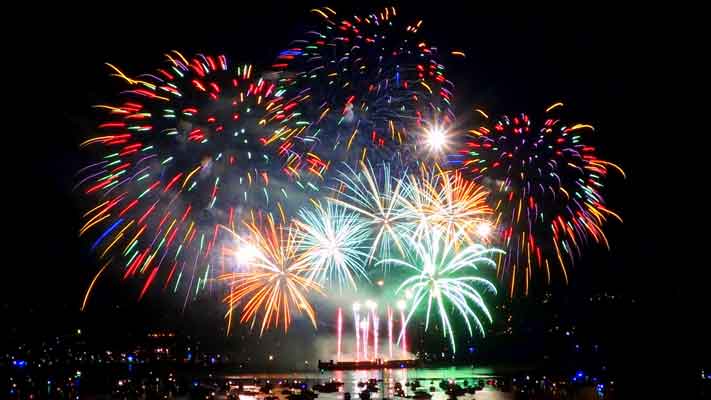|
1. Oxygen and carbon dioxide can both be tested for in the lab.
Select the most appropriate test for each gas from the table below:
| |
Oxygen |
Carbon dioxide |
| A |
‘Pops’ with a lit splint |
Puts out a lit splint |
| B |
‘Pops’ with a lit splint |
Turns limewater milky |
| C |
Relights a glowing splint |
Turns limewater milky |
| D |
Relights a glowing splint |
Puts out a lit splint |
|
|
| 2. Fireworks have coloured flames due to the presence of metal ions. |

|
A blue-green flame is produced by the presence of ..
- A. calcium ions
- B. copper(II) ions
- C. potassium ions
- D. lithium ions
|
|
| 3. A student tested a solution for the presence of bromide ions. The test was positive.
The solutions the student added and the observation made were..
| |
Substances added |
Observation made |
| A |
Nitric acid and silver nitrate |
White precipitate |
| B |
Nitric acid and silver nitrate |
Cream precipitate |
| C |
Hydrochloric acid and silver nitrate |
White precipitate |
| D |
Hydrochloric acid and silver nitrate |
Cream precipitate |
|
|
4. A white solid X was tested and gave the following results:
| Test |
Result |
| Flame test |
yellow flame |
| Dilute hydrochloric acid added |
Bubbles of gas which turned limewater milky |
|
|
The name of solid X is ...
- A. sodium carbonate
- B. sodium sulfate
- C. lithium sulfate
- D. lithium carbonate
|
|
5. Which is the correct test for ammonium ions?
| |
Warm the sample gently with .. |
Test any gas evolved with.. |
| A |
Sodium hydroxide solution |
Damp blue litmus paper |
| B |
Sodium hydroxide solution |
Damp red litmus paper |
| C |
Dilute hydrochloric acid |
Damp blue litmus paper |
| D |
Dilute hydrochloric acid |
Damp red litmus paper |
|
|
Q6-7:
A yellow solution Y was tested and gave the following results:
| Test |
Result |
| Add sodium hydroxide solution |
brown precipitate |
| Add dilute hydrochloric acid then barium chloride solution |
white precipitate |
|
|
6. The name of the brown precipitate formed is..
- A. iron(II)hydroxide
- B. iron(III)hydroxide
- C. iron(II)sulfate
- D. iron(III)sulfate
|
|
7. The formula of the white precipitate formed is..
- A. FeCl2
- B. BaCO3
- C. BaSO4
- D. BaCl2
|
|
8. What solid is used to test for the presence of water and what colour change would be observed if water was present?
| |
Solid |
Result |
| A |
anhydrous copper(II)sulfate |
Blue to white |
| B |
anhydrous copper(II)sulfate |
white to blue |
| C |
anhydrous copper(II)carbonate |
Blue to white |
| D |
anhydrous copper(II)carbonate |
White to blue |
|
|
9. A student is given an unknown solution. Which two of the following tests would provide evidence that the solution is copper(II)sulfate?
| 1. Adding hydrochloric acid |
| 2. Adding sodium hydroxide solution |
| 3. Adding dilute nitric acid then silver nitrate |
| 4. Adding dilute hydrochloric acid then barium chloride |
|
|
- A. 1 and 3
- B. 1 and 4
- C. 2 and 3
- D. 2 and 4
|
|
10. A white precipitate formed when sodium hydroxide solution was added to solution X. Which cation could be present in solution X?
- A. Na+
- B. NH4+
- C. Ca2+
- D. Fe2+
|
|
|